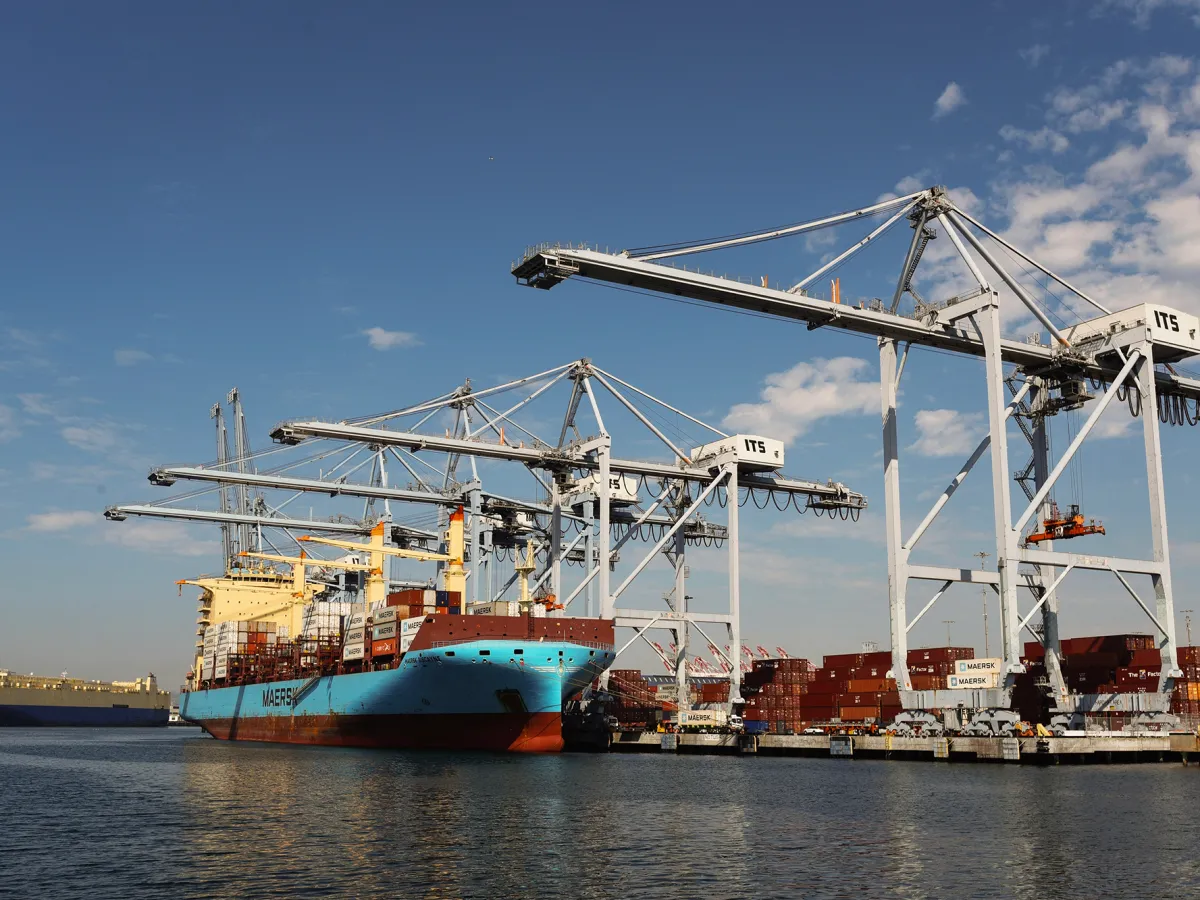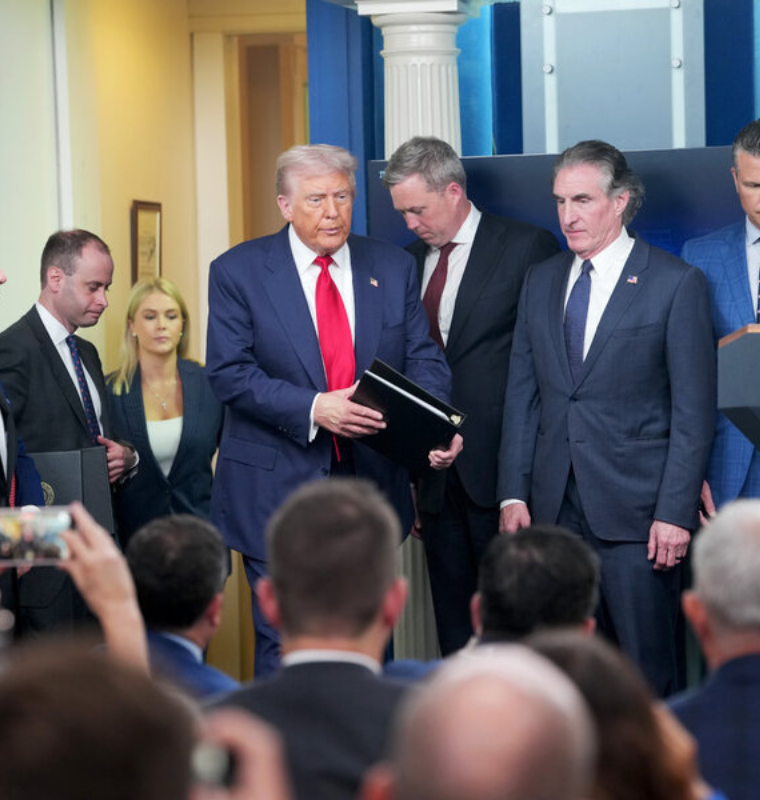Trump’s Trade War Hits Hardest on Smaller U.S. Ports from California to the Gulf Coast
Trump’s Trade War Hits Hardest on Smaller U.S. Ports from California to the Gulf Coast
By
David Goldfarb
Last updated:
July 22, 2025
First Published:
August 6, 2025

Photo: CalMatters
Smaller U.S. Ports Face Sharp Declines Amid Trade War Shifts
From California’s West Coast to the Gulf of Mexico, many of the nation’s smaller and secondary ports are feeling the brunt of President Trump’s ongoing trade war. As shippers race to navigate looming tariff deadlines in August, they are increasingly consolidating cargo shipments through larger ports like Los Angeles, leaving ports like Oakland, Jacksonville, New Orleans, and Panama City struggling with reduced trade volumes.
Paul Brashier, Vice President of Global Supply Chain at ITS Logistics, explained that these smaller ports are “getting sandwiched out of port calls” as carriers favor bigger hubs to move goods faster and more efficiently before tariffs rise.
Trade Data Reveals a Clear Shift in Container Traffic
According to ITS Logistics’ monthly US Port/Rail Ramp Freight Index, while the Port of Los Angeles recorded a notable increase in container volume in June, many smaller ports showed steep declines. The Port of Oakland, a critical gateway especially for agricultural exports, reported a 10.1% month-over-month drop in June, with year-over-year container traffic down by 13%.
Bryan Brandes, Oakland’s Maritime Director, attributes this downturn not to seasonal trends but to a “market recalibration,” driven by tariff uncertainty that is forcing importers and exporters to rethink timing and shipping routes.
Economic and Employment Impact of Reduced Port Activity
Container traffic isn’t just a number—it’s a critical economic driver. The Port of Oakland supports over 98,000 regional jobs and generates approximately $174 billion in annual economic activity. Reduced container volumes threaten these jobs and local economies, with ripple effects that extend far beyond the docks.
Similarly, larger ports like Los Angeles have expressed concerns about job losses tied to fluctuating container volumes. In May, Port of LA’s Executive Director Gene Seroka revealed that for every two longshore workers who showed up to work, one left without a job due to reduced cargo handling.
Shippers Prioritize Efficiency Amid Uncertainty
The shifting landscape has logistics companies and shippers concentrating their freight on fewer ports to maximize efficiency and cut costs. “It’s all about margins,” Brashier said. “When more containers arrive at one port rather than being split between two or three, shippers gain negotiating power and reduce expenses.”
This trend is likely to persist, with many smaller ports continuing to experience lower container arrivals. According to trade tracker Vizion, between June and July:
- Mobile, AL saw a rise of 7.04% in container volume (+3,154 TEUs).
- Oakland, CA experienced a slight increase of 1.10% (+1,183 TEUs).
- However, ports like Jacksonville (-12.90%), Charleston (-13.37%), Baltimore (-17.65%), New Orleans (-34.92%), Seattle (-35.75%), and Tacoma (-36.01%) recorded significant drops.
State Officials Call for Trade Policy Stability
North Carolina Governor Josh Stein recently highlighted how fluctuating trade policies hurt ports like Wilmington, which has seen reduced traffic amid the trade war. “Businesses need certainty to plan investments,” Stein emphasized, noting that over 20% of North Carolina’s GDP in 2024 came from international trade.
Outlook: Trade War Creates Ongoing Supply Chain Challenges
Data from SONAR on ocean freight bookings indicate a likely continued slowdown in orders from China to the U.S. As tariffs loom, many American companies are scaling back or dropping less popular products to manage costs.
Carriers are adjusting service schedules, reducing the number of sailings, and shipping fuller containers. This mirrors broader global trade caution, complicating logistics and supply chain planning.
The Hidden Costs of Port Shifts
While concentrating shipments at major ports may seem efficient, it can also drive up costs. Brashier explained that when cargo is offloaded far from traditional distribution centers, transportation expenses surge. Trucking costs for containers moved 400 to 500 miles can be two to four times higher than local pickups, eroding any savings from consolidating shipments.
As the U.S.-China trade conflict deepens, smaller ports face sustained economic pressures while larger ports temporarily shoulder increased traffic. The evolving trade policies continue to inject uncertainty into supply chains, forcing shippers and port authorities alike to adapt to a volatile environment—one where efficiency, cost-cutting, and timing have never been more critical.
Popular articles
Subscribe to unlock premium content
Disney’s Timeless Magic and How the Entertainment Giant Continues to Shape Culture and Innovation

Imran Khan’s Economic Missteps Amid Political Chaos in Pakistan

The Philippines’ Digital Shift How Remittances and BPO Are Fueling Growth

Disney’s Timeless Magic and How the Entertainment Giant Continues to Shape Culture and Innovation

Imran Khan’s Economic Missteps Amid Political Chaos in Pakistan

Disney’s Timeless Magic and How the Entertainment Giant Continues to Shape Culture and Innovation









